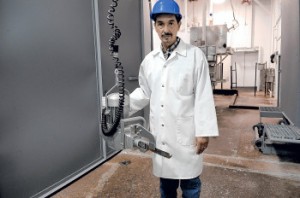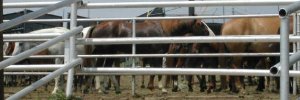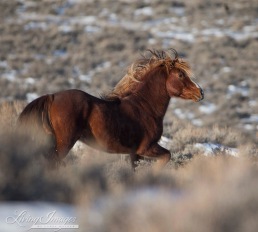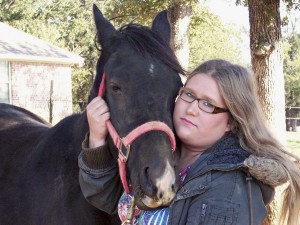Christian Science Monitor
More than 40,000 wild mustangs roam on public lands in the West, federally protected as living symbols of American heritage. Since 1971, the Bureau of Land Management has been responsible for maintaining mustang herds and administering a popular adopt-a-horse program. But allegations of criminal activities within the BLM - including slaughter-for-profit schemes - are casting a shadow over the agency.
Related stories
Former and current employees say shady dealings are customary in the BLM horse program. "The American public is being cheated out of millions of dollars a year," says Steven Sederwall, a BLM law-enforcement agent who retired last year. "In 23 years as a cop, I've never seen anything like the depth of corruption I've seen in the BLM."
Last month, Mr. Sederwall and five former colleagues sent a nine-page letter to US Attorney General Janet Reno, detailing "an ever-growing list of felony criminal violations committed by the Bureau of Land Management." Charges include BLM employees selling wild horses to slaughterhouses and rodeo circuits; falsified financial and horse inventory records; misappropriation of funds; and obstruction of justice during investigations.
Bureau officials say the accusations are unfounded. "The vast majority of these allegations are up to 15 years old. These are not things that are happening now," says Bob Johns, Washington spokesman for the BLM, a division of the Department of the Interior.
Walter Johnson, chief of law enforcement for the BLM, says he has seen no evidence to support the charges. "I am not aware of either myself or any member of my staff doing anything inappropriately, or involving any criminal action. I will not comment on anything unless it is firsthand knowledge to me."
But in a June 1993 memorandum to the Interior Department inspector general, Mr. Johnson wrote regarding a federal investigation in New Mexico: "Through the initial phase of the investigation, it is apparent that administrative actions by some BLM wranglers and program administrators have not been in compliance with the direction and guidance provided.... In many of the adoptions and group adoptions reviewed, personnel from BLM apparently promoted the adoption of horses for commercial gain."
Federal law prohibits the government from selling wild horses to slaughterhouses and other commercial operations. To keep herd size in check, the BLM is charged with rounding up 6,000 to 9,000 wild horses per year and offering them for adoption. Adopters are required to pay a $125 fee and wait one year before taking legal title to a horse. The provisions are intended to reduce the incidence of profit-motivated adoptions.
But sources inside the BLM say thousands of horses are taken illegally from rangelands each year. If money changes hands, it's strictly off the books. As for documented adoptions, sources say backdated paperwork is a common tactic to give adopters quicker title to a horse.
After one year, an adopted wild horse may be sold at will. A 1,000-pound horse will typically bring $700 to $900 on the slaughter market. An untrained riding horse, on the other hand, may sell for only $300 to $400.
BUT those accusing the BLM of wrong-doing suffered a setback last month. The Justice Department has aborted a long-running investigation in Del Rio, Texas, which involved group adoptions of hundreds of horses arranged by two BLM wranglers.
A federal grand jury was convened in 1994 to investigate allegations by unnamed neighbors that James Galloway, a BLM-contracted wrangler, had taken 36 mustangs to his father-in-law's ranch, reportedly to fatten them for slaughter. Mr. Galloway also allegedly kept untitled horses in other locations.
But no charges were filed against Galloway. John Murphy, assistant US attorney in San Antonio, says the case was dropped because it "lacked prosecutive merit."
Sederwall, who led the initial Del Rio investigation for the BLM, claims the agency is hiding something. "We've got all the evidence, but they successfully covered it up."
He contends that Galloway was ready to implicate BLM officials. "They couldn't prosecute Galloway because he was going to turn evidence against the BLM. Galloway only did what they taught him," Sederwall says.
Sederwall says he was taken off the Del Rio case after he uncovered incriminating evidence against BLM management. He and 14 other investigators were ordered not to speak to the grand jury, he says. Eventually, these agents were all reportedly transferred, fired, or pressured into early retirement.
Reed Smith, deputy state BLM director for New Mexico until he retired in 1994, maintains "BLM management fought the Del Rio investigation with everything they had."
Karen Sussman, president of the International Society for the Protection of Mustangs and Burros, says the problem is an inherent BLM conflict of interest. "The BLM manages for land and cattle. Traditionally, they're committed to ranching. Not wild horses."
Ranchers, who pay the government to graze their cattle on rangelands, consider mustangs a competitor for forage, making wild-horse rustling a longstanding and accepted tradition in the West.
Another federal grand jury is reviewing allegations of internal fraud in the Jackson, Miss., BLM office. The US attorney there would not comment on the investigation. But a BLM employee in the Jackson office says, "What this program has done in reality is make a few people very rich.... You can talk to rangers, special agents, BLM people all over the US, who have independently come to the same conclusion," he says. "If a dozen people are hollering smoke, smoke, smoke, there has got to be fire."
















